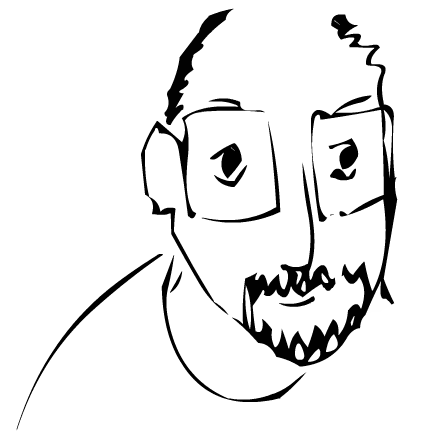The faculty members in our college are no exception. The College of Arts and Sciences at Dakota State University has for a long time been known as a place of mixed media, a place where the interests of academic disciplines meet and mingle with the latest in technology and content production techniques.
In the past we of the "writing faculty" thought long and hard about how the questions and awarenesses of English studies, of literary interpretation and English Composition, might embrace desktop publishing software, text analysis programs and web authoring tools. But when we did think these thoughts, it was always with the sense that these tools were somehow specialized and most likely to be employed by undergraduate majors who would use such tools in their professional careers.
Well, that's not the world we live in anymore. Today, twelve year olds are editing music videos. Nine year olds are posting podcasts. The means of producing "new media" is in the hands of anyone with a computer and an internet connection.
Given the ubiquity of digital media, and the ease of its production, we are looking a bit differently at the interplay of these things and the interests of our discipline. If, as the National Council of Teachers of English has proposed, we live in a time when a "broader" definition of Composition that embraces "multimedia" is not an option but a necessity, how, we are wondering, can we effectively integrate video, audio, image, hypertext, text, and whatever comes next (3D modeling, anyone?) into our own projects and the work we do with our students?
My colleague John Nelson is taking his first steps toward this brave new world and has asked his students to create animated slideshows with spoken narrative and music in the mix. To show he students the sort of thing he's looking for, he made one himself. Here it is:
Listening to John's story I was struck by what he said about raising kids in the presence of "electronic babysitters". I found myself wondering if my own son is too "distracted" by the videos he watches on tv. I try to talk to him about what he sees, but sometimes I can't help thinking that he'd be better off without the box. These thoughts moved me to make this video in return:
My movie doesn't have a spoken narration like John's. I told my story with pictures and titles and music. John kept his focus on the essay he wrote and read to go with his pictures and soundtrack. Ironically, I went "non-printcentric" and let other elements do the talking for me.
Both approaches to digital storytelling are valid forms of expression. So is a simple line drawing like this one I just drew myself:
Or, g-d forbid, a novel.
All these forms can coexist. Each one offers itself as a medium for worthy objects of study and a worthy vehicle for the articulation of worldviews. At this point, it seems, the thing to do is to put ourselves and our discipline out there, to hang on to our questions and see what happens next.

2 comments:
It's nice to see digital storytelling being used in higher ed. What once was seen as something of a specialty that was meant for tv/video production classes are now gaining as important literary pursuits.
I believe this to be as important as reading and writing...maybe more important given our culture.
Continued success in your efforts
Thanks for the comments on my essay, Dan, and for effectively summarizing the efforts we're making in the department. Thanks too, Dean, for weighing in.
Post a Comment